How to create a pop/R&B chord progression using major and minor triads
Learn these simple but versatile chords
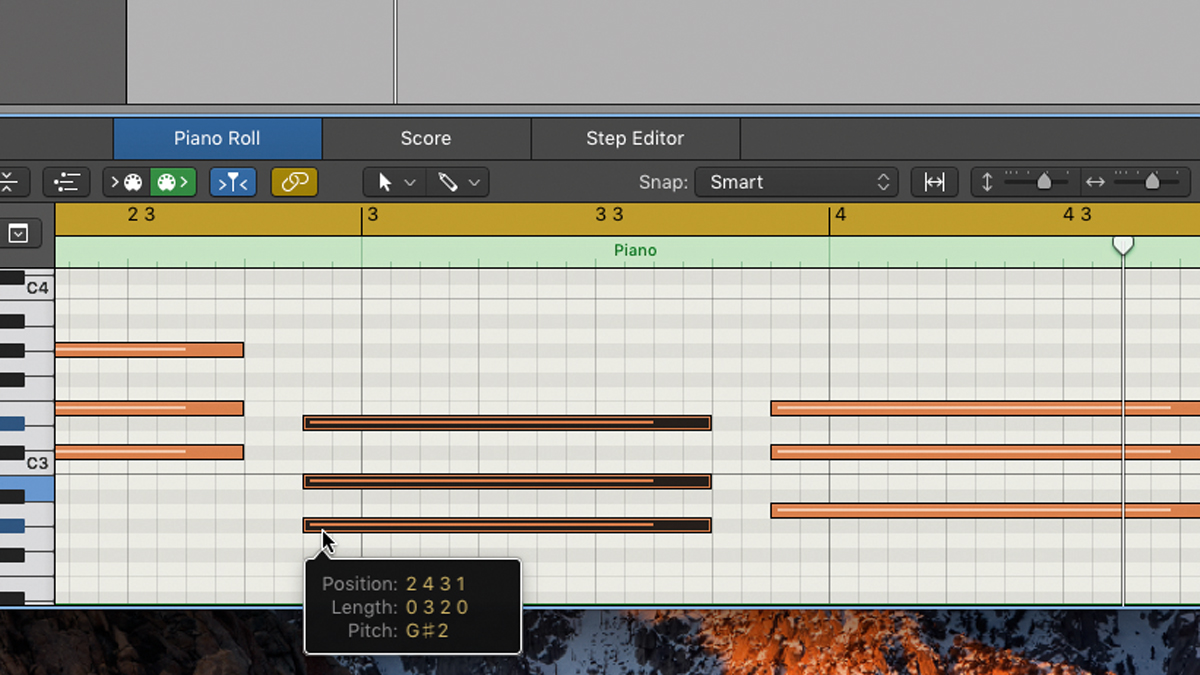
Popular music can be categorised into a multitude of genres, but probably the broadest are mainstream pop and R&B. This is the kind of thing you hear on the radio every day, and possibly the genres that rely the most on regular major and minor diatonic triads.
This palette of chords can produce millions of combinations, which is why so many classic pop songs can be boiled down to relatively simple progressions of basic chords like these.
Rhythmically speaking, the broad genre of pop and R&B can assume many guises, from slow power ballads through mid-tempo jams to full-on dance-style tracks. Plenty of recent releases have featured minimal drum tracks consisting of sparse handclaps and percussion, while others have adopted a kind of Caribbean dancehall feel, with an irresistible beat made up of pushed snare drums laid over a 4/4 kick.
Melodies, meanwhile, tend to be simple affairs using mainly a handful of notes from the parent scale, dependent on whether the song is in a major or minor key.
Let’s create a simple pop/R&B chord progression using triads.

Step 1: You can make a major chord in any key by using a specific formula based on the intervals between the notes in the chord. First, we need to pick a root note - let’s start with C, as shown here. For the next note, we need a major third interval, so we count four semitones up to end up on E. Then we count another three semitones up, finishing on G. In the end we have C, E and G, which is a C major chord.
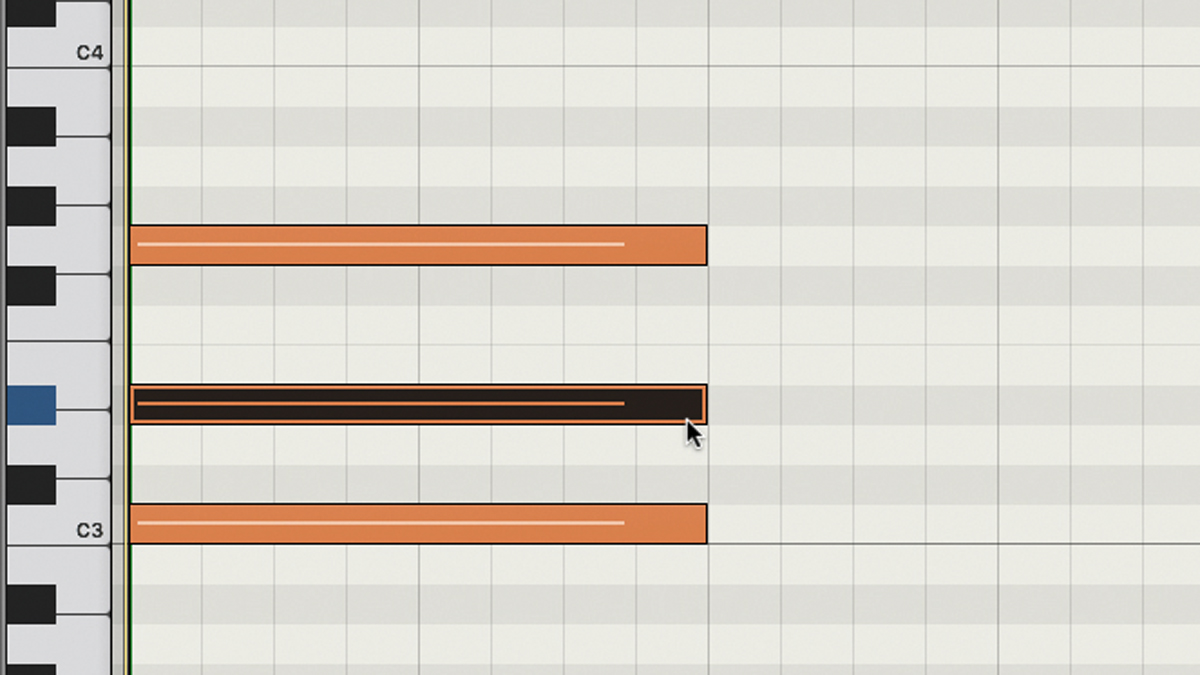
Step 2: It’s the interval between the middle note and the root that determines whether a triad is major or minor. In the chord we just made, the interval was a major third (four semitones), making it a major chord. If we decrease the interval by one semitone, making a minor third (three semitones) between this and the root, then the triad becomes a minor chord comprising C, Eb and G, which is C minor.
Want all the hottest music and gear news, reviews, deals, features and more, direct to your inbox? Sign up here.
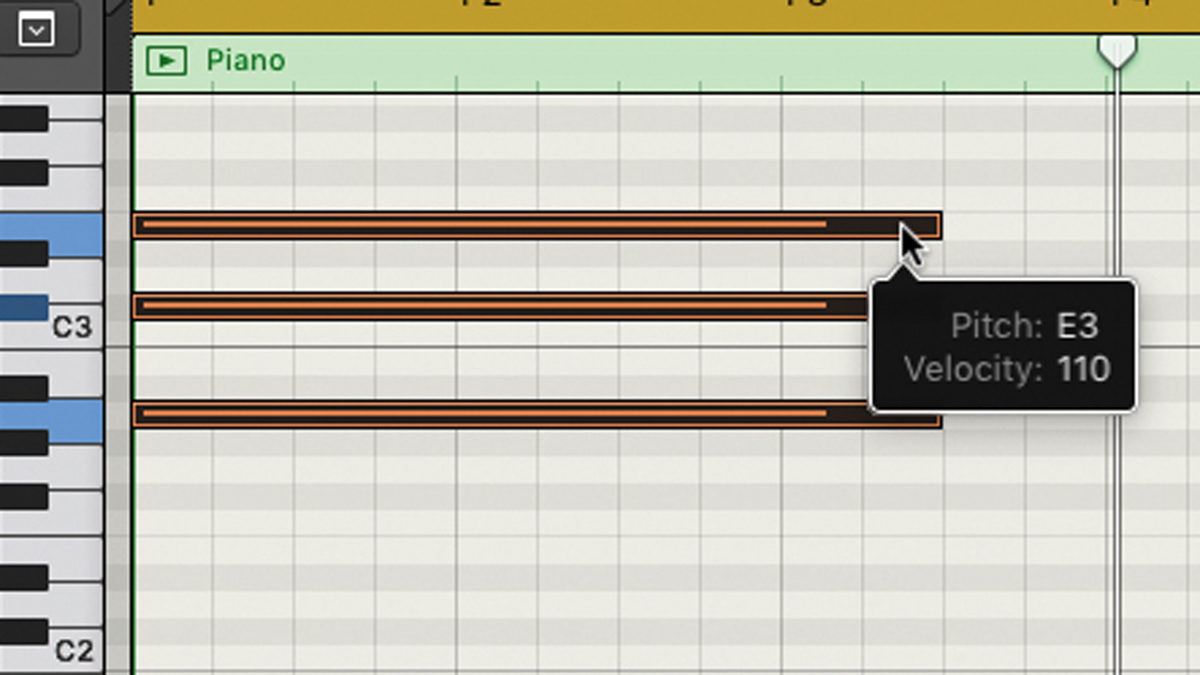
Step 3: To show how these formulae work in any key, let’s program a typical pop progression of minor and major chords, beginning with A major. Our root note is A, and we want to make a major chord, so we count up four semitones - an interval of a major third - to C#, and add this note to our chord. Another three semitones brings us to E, completing our first chord: A-C#-E, which is A major.
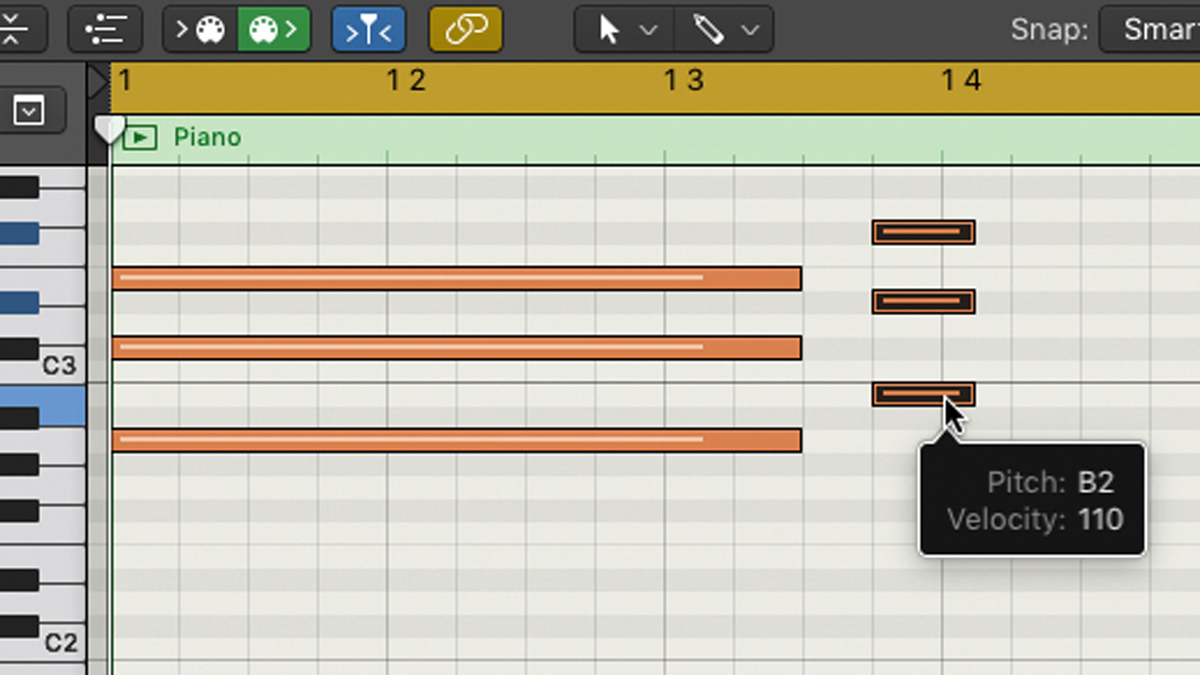
Step 4: Our second chord is a passing B major at the end of the bar, so we copy the A major chord we just made and paste it into position at 1.3.4.1, then shift the whole thing up two semitones. Because the intervals between the notes in the chord remain the same, raising it in pitch by this amount from A to B creates a B major chord - B-D#-F#.
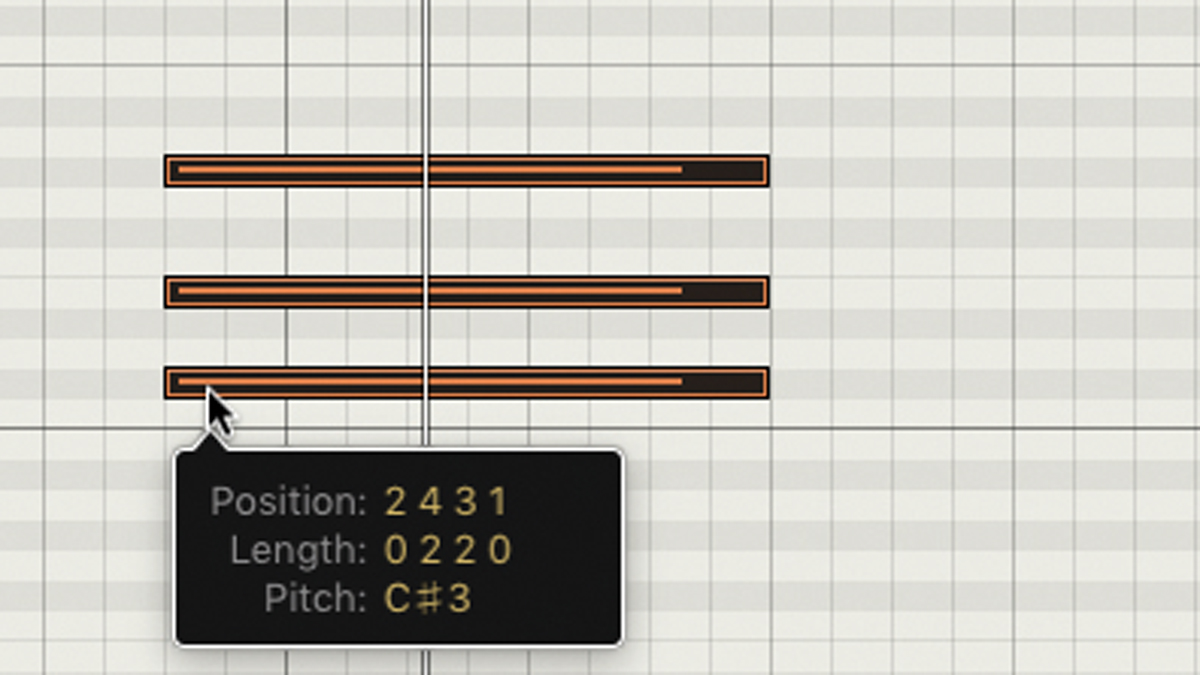
Step 5: We’ll make the next chord a minor one - C minor. Taking C as our root note, we count up an interval of three semitones (a minor third), landing on E. From there, we go up a further four semitones to land on G#, completing the C# minor chord - C#-E-G#. Our next chord is also minor, so we copy and paste the C minor into position at 2.4.3.1.

Step 6: This new chord needs to be a low G# minor, so we simply transpose all three notes in the chord down by five semitones. Since this preserves the chord’s internal structure of intervals between notes, the result of the transposition is a G# minor chord - G#, B, D#. All we need to do to complete the progression is copy an A major chord from the first bar to the end.
Computer Music magazine is the world’s best selling publication dedicated solely to making great music with your Mac or PC computer. Each issue it brings its lucky readers the best in cutting-edge tutorials, need-to-know, expert software reviews and even all the tools you actually need to make great music today, courtesy of our legendary CM Plugin Suite.
